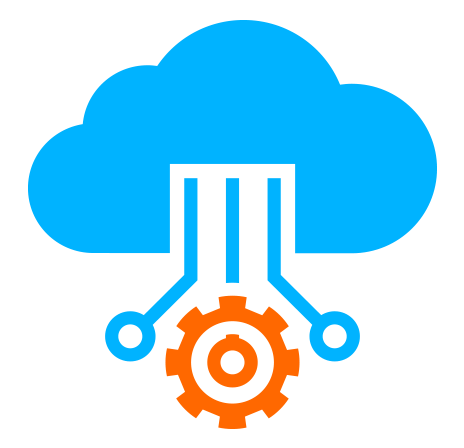 Server
Colocation
Server
Colocation
 CDN
Network
CDN
Network
 Linux Cloud
Hosting
Linux Cloud
Hosting
 VMware Public
Cloud
VMware Public
Cloud
 Multi-Cloud
Hosting
Multi-Cloud
Hosting
 Cloud
Server Hosting
Cloud
Server Hosting
 Kubernetes
Kubernetes
 API Gateway
API Gateway

AI models are evolving at breakneck speed. From chatbots that can hold near-human conversations to image recognition systems that outperform doctors in diagnostics AI is no longer a futuristic concept. It’s here, it’s mainstream, and it’s revolutionizing how businesses operate.
But here’s the kicker: while pre-trained models like GPT, BERT, and Stable Diffusion are incredibly powerful, they’re not tailor-made for your business. That’s where AI fine tuning steps in.
According to a 2024 McKinsey survey, over 65% of companies using AI actively fine-tune pre-trained models to improve performance on specific tasks, data domains, or languages. Fine tuning bridges the gap between general intelligence and specialized performance and you don’t need to be a deep learning expert to get started.
In this beginner-friendly guide, we’ll walk you through what AI fine tuning is, the techniques that power it, the best practices for doing it right, and how platforms like Cyfuture Cloud help simplify the infrastructure required to train, fine-tune, and deploy AI models at scale.
Simply put, AI fine tuning is the process of taking a pre-trained AI model and continuing its training on your specific dataset.
Let’s say you’re working with a large language model like GPT. It's trained on a broad range of internet text. But your company deals in legal contracts, or healthcare records, or multilingual customer queries. In that case, you can fine tune the base model so it performs significantly better on your domain-specific tasks.
Think of it like customizing a suit. The base model is the ready-to-wear suit. Fine tuning adds the final adjustments that make it your perfect fit.
Because training a model from scratch is time-consuming, expensive, and unnecessary for most teams. It requires:
◾ Massive datasets (think terabytes)
◾ Hundreds of GPU hours
◾ Expertise in deep learning and model architecture
In contrast, fine tuning lets you:
◾ Start with a high-performance model
◾ Train on smaller, task-specific data
◾ Get results faster and more cost-effectively
And when you're working on a reliable cloud infrastructure like what's available with Cyfuture Cloud you gain access to high-performance GPU servers, scalable hosting, and pre-installed ML frameworks to speed things up.
There’s no one-size-fits-all method. Let’s break down the most common techniques that beginners should know:
This is the classic approach:
You unfreeze the entire pre-trained model
Train it further on your dataset
It’s powerful, but computationally heavy. You'll need significant GPU power and memory, especially for models like BERT or GPT. It works best when you have a moderate-to-large dataset and want the model to adapt deeply to new data.
For full fine tuning, platforms like Cyfuture Cloud offer robust GPU hosting options such as A100 or V100-based servers that can handle the demand without breaking your budget.
Here, you:
Keep the base model frozen
Use its output embeddings as features
Train a small classifier or regressor on top
This method is faster, uses fewer resources, and works well when you have limited labeled data. It’s particularly useful in computer vision and natural language processing tasks.
Rather than updating the whole model, you:
Insert small trainable layers (adapters) between the existing layers
Only train those adapters
This keeps the base model intact, reduces training cost, and allows for modularity. You can even create different adapters for different tasks and switch them dynamically.
A newer, more advanced technique where:
You inject trainable low-rank matrices into the model
Only those matrices are trained
It’s designed to minimize resource usage while maintaining performance. Perfect for teams working with multiple tasks or languages on a tight compute budget.
When using cloud environments like Cyfuture Cloud, you can deploy LoRA fine tuning efficiently with minimal GPU utilization helping keep both latency low and costs manageable.
Here’s a simplified roadmap to get you going.
Depending on your task, you could start with:
BERT, RoBERTa, or GPT for text
ResNet, EfficientNet for images
Whisper or Wav2Vec for audio
Make sure your model is compatible with popular frameworks like Hugging Face Transformers or TensorFlow.
Curate a high-quality dataset. Size matters, but so does quality. Your model will only be as good as the data it sees.
Pro tip: Ensure you split your data into training, validation, and test sets to prevent overfitting.
This is critical. Fine tuning even at a small scale requires access to:
GPU-powered servers
High-speed data access
Reliable hosting
With Cyfuture Cloud, you can spin up pre-configured environments with PyTorch, CUDA, and Jupyter ready to go. Their AI-first cloud hosting ensures that you get the right performance without surprise costs.
Run your training script and closely monitor:
Loss and accuracy
GPU usage
Validation performance
Tools like Weights & Biases or TensorBoard integrate well with most setups and give you real-time visibility.
After training, test your model on unseen data. If performance meets your target, you can deploy the model as:
A web service (using Flask, FastAPI)
A cloud-based API (using Cyfuture’s container hosting)
An embedded service in your product
Cyfuture Cloud supports containerized deployment and auto-scaling, making it easy to serve AI models to thousands of users without hiccups.
To wrap things up, here are some tips to ensure your fine tuning efforts hit the mark:
Start small: Use a subset of your data to validate the training pipeline before scaling up
Use early stopping: Prevents overfitting by stopping training once validation loss starts increasing
Track everything: From hyperparameters to dataset versions reproducibility is key
Regularly retrain: Fine tuning isn’t a one-time thing. Models degrade over time as data evolves
Monitor post-deployment: Watch out for drift, latency, and real-world performance
Also, if you’re working in a regulated industry like finance or healthcare, ensure your cloud provider offers compliant and secure hosting- something Cyfuture Cloud is well-equipped for, with enterprise-grade data governance and access control.
AI isn’t just about building big models anymore it’s about making them relevant to your users. That’s what fine tuning is all about. Whether you're customizing a chatbot, refining a recommendation system, or optimizing a fraud detection pipeline, fine tuning gives you the precision that generic models simply can't offer.
And thanks to modern cloud platforms like Cyfuture Cloud, you don’t need a massive team or budget to make it happen. With ready-to-launch GPU servers, optimized AI hosting, and full-stack support for the most popular frameworks, Cyfuture helps you fine tune smarter not harder.
So don’t let “beginner” status hold you back. Your next breakthrough model might just be one fine-tuned dataset away.
AI fine-tuning is the process of training a pre-trained model on a smaller, domain-specific dataset to improve accuracy and performance for specialized tasks.
Fine-tuning helps models perform better on niche tasks, reduces training time, lowers costs, and produces more relevant, context-aware results compared to training from scratch.
It works by taking a pre-trained model and adjusting its weights using new task-specific data, allowing the model to adapt to new patterns without losing its base knowledge.
Large language models (LLMs), image models, speech models, and multimodal AI systems can all be fine-tuned based on specific use cases.
Benefits include improved accuracy, reduced errors, personalized output, enhanced relevance, and better performance on industry-specific workflows.
It varies by model and task. Some tasks require only a few hundred examples, while others may need thousands to achieve optimal results.
Training from scratch requires large datasets and high compute resources. Fine-tuning uses an existing pre-trained model, making the process much faster, cheaper, and more efficient.
Costs depend on model size, training duration, and compute resources. However, fine-tuning is significantly cheaper than full model training.
Use cases include chatbots, customer support, sentiment analysis, document classification, code generation, medical analysis, and personalized content generation.
Popular tools include Hugging Face, OpenAI fine-tuning APIs, TensorFlow, PyTorch, Vertex AI, and other cloud ML platforms.

Let’s talk about the future, and make it happen!
By continuing to use and navigate this website, you are agreeing to the use of cookies.
Find out more


